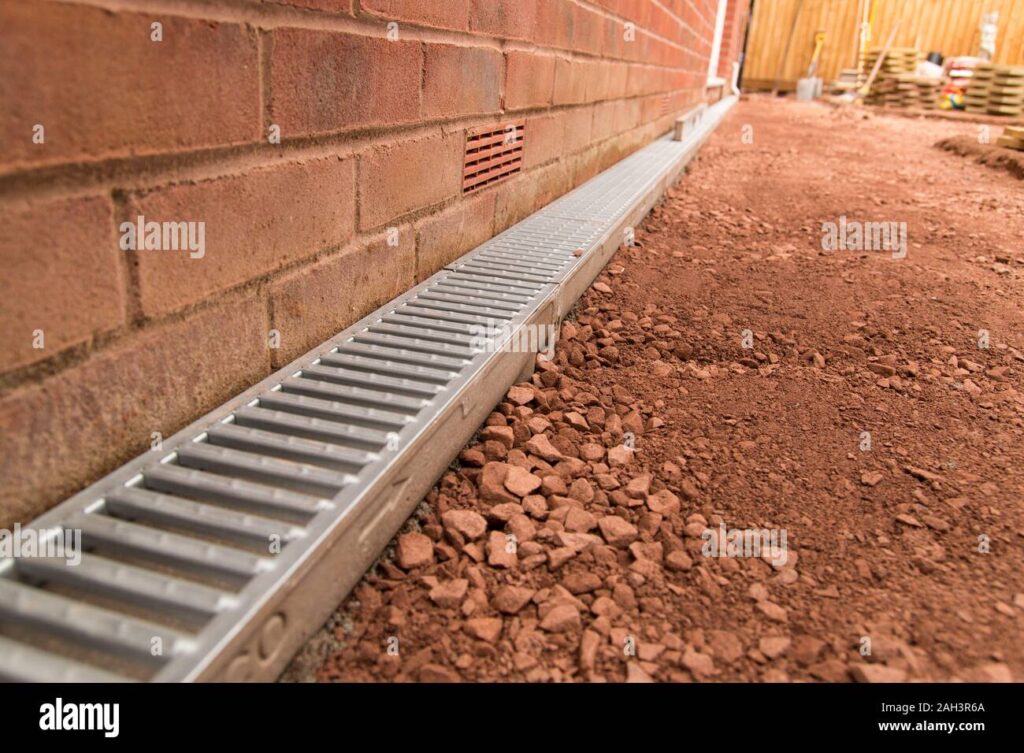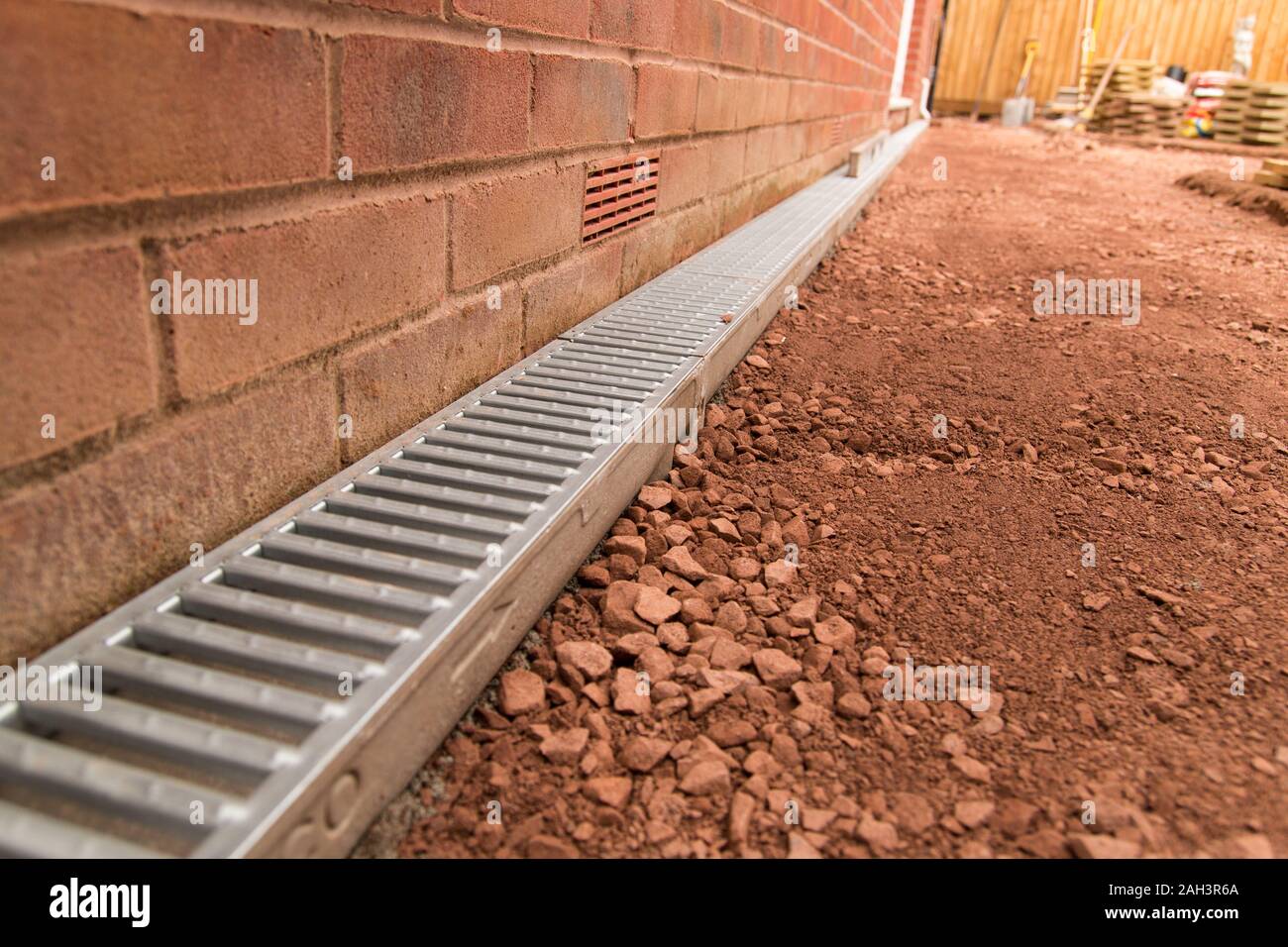
The Ultimate Guide to Patio Drains: Types, Installation, and Maintenance
A well-designed patio is an extension of your living space, a place to relax, entertain, and enjoy the outdoors. However, without proper drainage, your patio can quickly become a source of frustration. Standing water can lead to slips and falls, damage to the patio surface, and even structural problems for your home. That’s where a patio drain comes in. This comprehensive guide will cover everything you need to know about patio drains, from understanding their purpose and types to installation and maintenance tips.
Why You Need a Patio Drain
The primary function of a patio drain is to efficiently remove water from the patio surface, preventing it from pooling and causing problems. Here are some key reasons why installing a patio drain is essential:
- Prevents Water Damage: Standing water can seep into the patio surface, causing cracks, erosion, and other forms of damage.
- Reduces Slip Hazards: Wet surfaces are slippery, increasing the risk of falls, especially for children and the elderly. A patio drain helps keep the surface dry and safe.
- Controls Mosquito Breeding: Stagnant water is a breeding ground for mosquitoes, which can transmit diseases. Proper drainage eliminates this problem.
- Protects Your Home’s Foundation: Excess water near your home’s foundation can lead to structural problems. A patio drain helps divert water away from the foundation.
- Enhances Aesthetics: A dry, clean patio is more inviting and enjoyable than one that is constantly wet and stained.
Types of Patio Drains
There are several types of patio drains available, each with its own advantages and disadvantages. Choosing the right type depends on the size of your patio, the amount of rainfall in your area, and your aesthetic preferences.
Channel Drains
Channel drains, also known as trench drains, are long, narrow drains that typically run along the edge of a patio or across a large surface area. They are highly effective at capturing and channeling water away from the patio. Channel drains usually consist of a channel body, a grate that covers the channel, and an outlet that connects to a drainage pipe.
Pros:
- High water flow capacity
- Effective for large patios
- Durable and long-lasting
Cons:
- Can be more expensive than other types of drains
- Requires more extensive installation
Area Drains
Area drains are typically round or square drains that are installed flush with the patio surface. They are designed to collect water from a specific area and direct it to a drainage pipe. Area drains are suitable for smaller patios or areas where water tends to pool.
Pros:
- Relatively inexpensive
- Easy to install
- Available in various sizes and styles
Cons:
- Lower water flow capacity compared to channel drains
- May require multiple drains for larger patios
Slot Drains
Slot drains are a type of channel drain that features a narrow slot instead of a grate. They are designed to be less visible than traditional channel drains, making them a popular choice for modern patios.
Pros:
- Discreet and aesthetically pleasing
- Effective at capturing water
Cons:
- Can be more expensive than other types of drains
- May be more prone to clogging
French Drains
While not strictly a patio drain in the traditional sense, a French drain can be used to divert water away from a patio. A French drain is a trench filled with gravel or rock that contains a perforated pipe. The pipe collects water and carries it away from the patio.
Pros:
- Effective at draining large areas
- Relatively inexpensive to install
Cons:
- Requires more extensive excavation
- May not be suitable for all patios
Choosing the Right Patio Drain
Selecting the appropriate patio drain involves considering several factors. These include the size of your patio, the amount of rainfall your region receives, the existing landscaping, and your budget. If you experience heavy rainfall, a channel drain might be the best option due to its high water flow capacity. For smaller patios or areas with minimal water pooling, an area drain may suffice. Consider the aesthetic appeal as well; slot drains offer a more discreet solution. Don’t hesitate to consult with a landscaping professional or contractor to determine the most suitable patio drain for your specific needs. They can assess your property and provide expert advice based on their experience.
Patio Drain Installation: A Step-by-Step Guide
Installing a patio drain can be a DIY project for experienced homeowners, but it’s often best left to the professionals. Here’s a general overview of the installation process:
- Planning and Preparation: Determine the location of the drain, the type of drain you’ll be using, and the route for the drainage pipe. Obtain all necessary permits and materials.
- Excavation: Dig a trench for the drain and the drainage pipe. The depth of the trench will depend on the type of drain and the slope of the drainage pipe.
- Installation of the Drain: Place the drain in the trench and connect it to the drainage pipe. Ensure that the drain is level and properly aligned.
- Backfilling: Backfill the trench with gravel or soil, compacting it as you go. Make sure the patio drain is securely in place.
- Connecting to Drainage System: Connect the drainage pipe to an existing drainage system, such as a storm sewer or a dry well. Ensure the connection is secure and watertight.
- Testing: Test the drain by pouring water onto the patio and observing how quickly it drains. Make any necessary adjustments.
Important Note: Always consult local building codes and regulations before installing a patio drain. Incorrect installation can lead to drainage problems and potential damage to your property.
Maintaining Your Patio Drain
Regular maintenance is crucial to keep your patio drain functioning properly. Here are some essential maintenance tips:
- Regular Cleaning: Remove leaves, debris, and other obstructions from the drain regularly. This will prevent clogs and ensure proper water flow.
- Flushing the Drain: Periodically flush the drain with a hose to remove any accumulated sediment or debris.
- Inspecting for Damage: Inspect the drain for cracks, damage, or corrosion. Repair or replace any damaged components promptly.
- Winterization: In cold climates, protect the drain from freezing temperatures by covering it or insulating it.
Troubleshooting Common Patio Drain Problems
Even with regular maintenance, patio drains can sometimes experience problems. Here are some common issues and how to address them:
- Clogged Drain: A clogged drain is the most common problem. Use a drain snake or a plumber’s auger to remove the obstruction.
- Slow Drainage: Slow drainage can be caused by a partial clog or a buildup of sediment. Flush the drain with a hose and consider using a drain cleaner.
- Standing Water: Standing water indicates that the drain is not functioning properly. Check for clogs, damage, or improper slope.
- Backflow: Backflow occurs when water flows back up the drain. This can be caused by a blockage in the drainage pipe or a problem with the drainage system.
Cost of Patio Drain Installation
The cost of installing a patio drain varies depending on the type of drain, the size of the patio, and the complexity of the installation. DIY installation can save on labor costs, but professional installation ensures proper functionality and adherence to building codes. On average, expect to pay between $500 and $2,000 for professional installation. Factors that influence the cost include the type of patio drain (channel drains are typically more expensive), the need for extensive excavation, and the complexity of connecting to an existing drainage system.
Patio Drain Ideas and Inspiration
When it comes to patio drains, functionality doesn’t have to come at the expense of aesthetics. There are many ways to integrate a patio drain seamlessly into your patio design. Consider using decorative grates that complement your patio’s style. Slot drains offer a minimalist look that blends well with modern designs. You can also incorporate plants and landscaping around the drain to create a more natural and integrated look. [See also: Landscaping Ideas for Patios] Explore online resources and design magazines for inspiration on how to make your patio drain both functional and visually appealing.
Finding a Qualified Patio Drain Installer
If you’re not comfortable installing a patio drain yourself, it’s essential to hire a qualified professional. Look for contractors with experience in drainage systems and a proven track record of successful installations. Check online reviews and ask for references from previous clients. A reputable contractor will provide a detailed estimate, explain the installation process, and ensure that the patio drain is properly connected to your existing drainage system. [See also: How to Choose a Contractor] Don’t hesitate to ask questions and clarify any concerns before hiring a contractor for your patio drain installation.
Conclusion: Investing in a Patio Drain for a Lasting Outdoor Space
A patio drain is a vital component for maintaining a safe, functional, and aesthetically pleasing outdoor living space. By understanding the different types of patio drains, following proper installation procedures, and implementing regular maintenance practices, you can ensure that your patio remains a comfortable and enjoyable area for years to come. Whether you choose a channel drain, an area drain, or a slot drain, investing in a quality patio drain is an investment in the long-term health and beauty of your home. So, take the time to assess your needs, explore your options, and choose the patio drain that best suits your property. Your future self (and your patio) will thank you for it.

